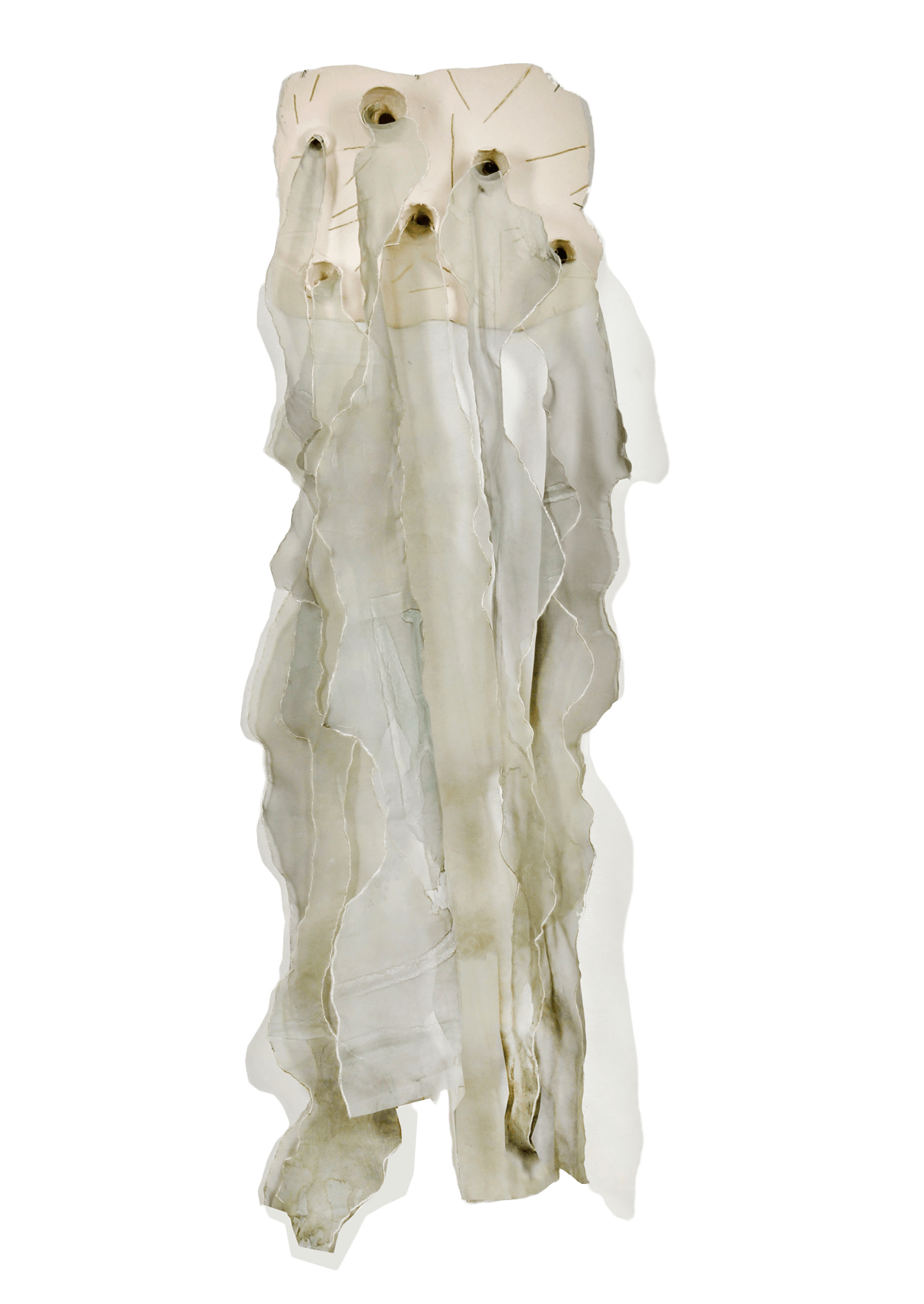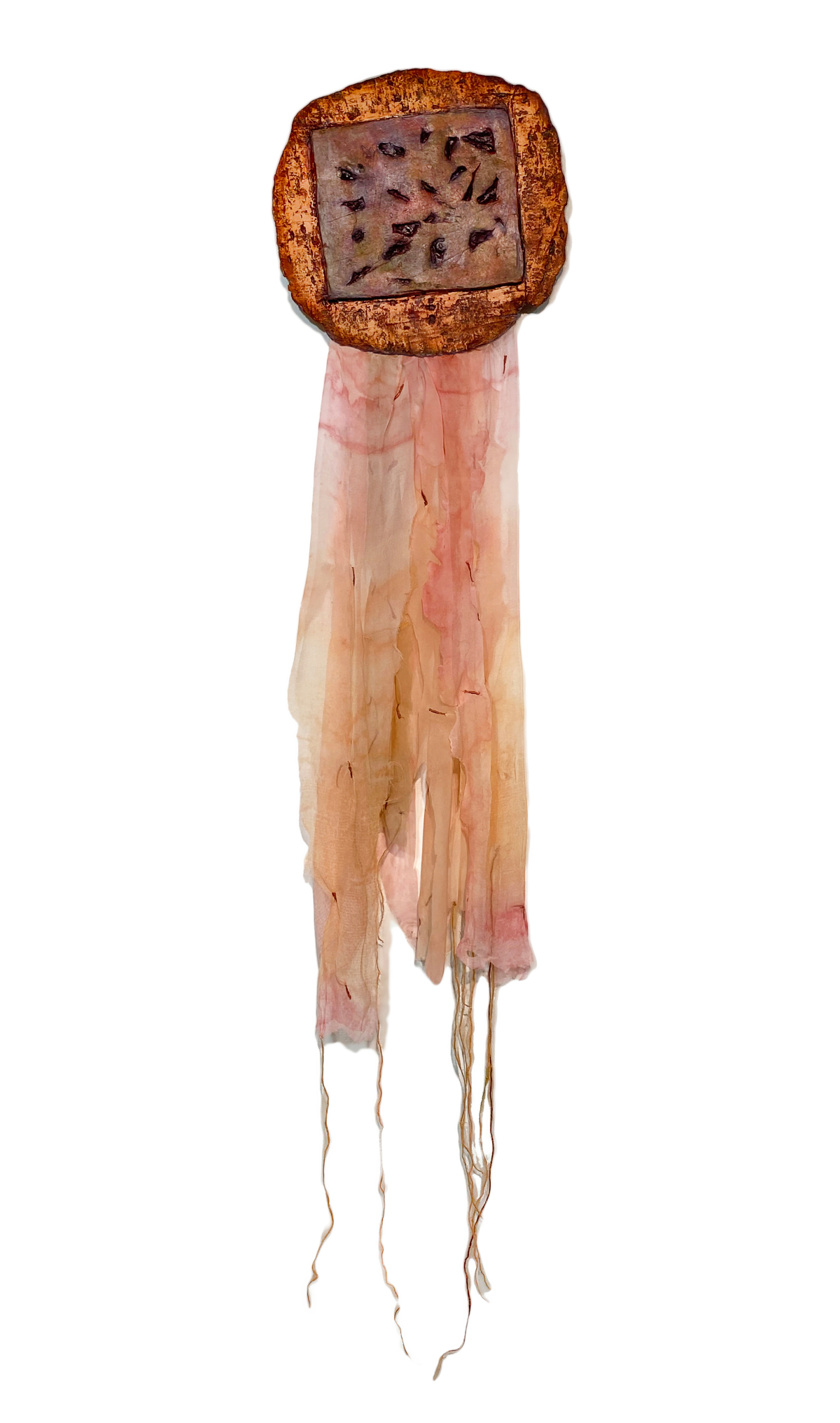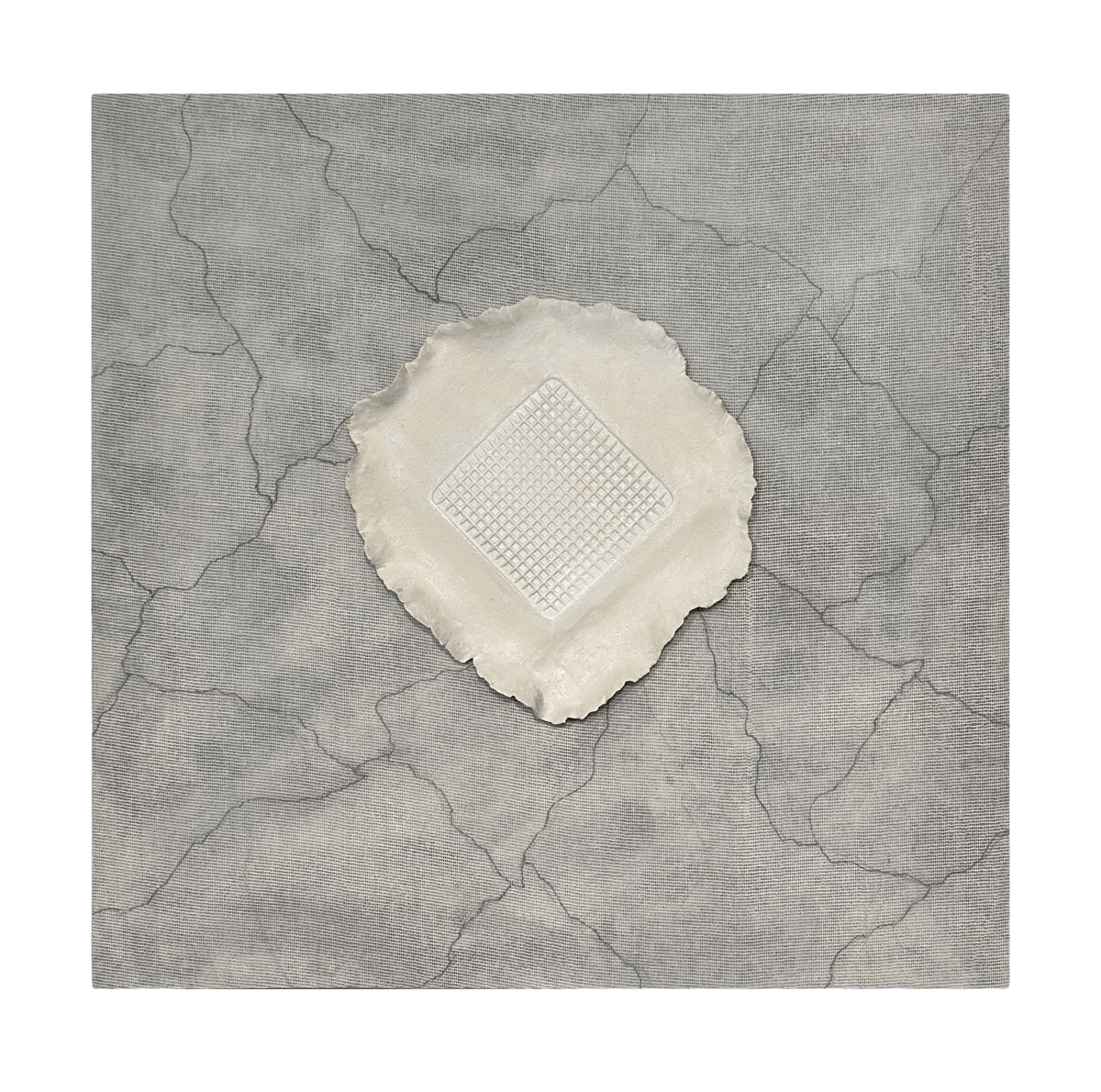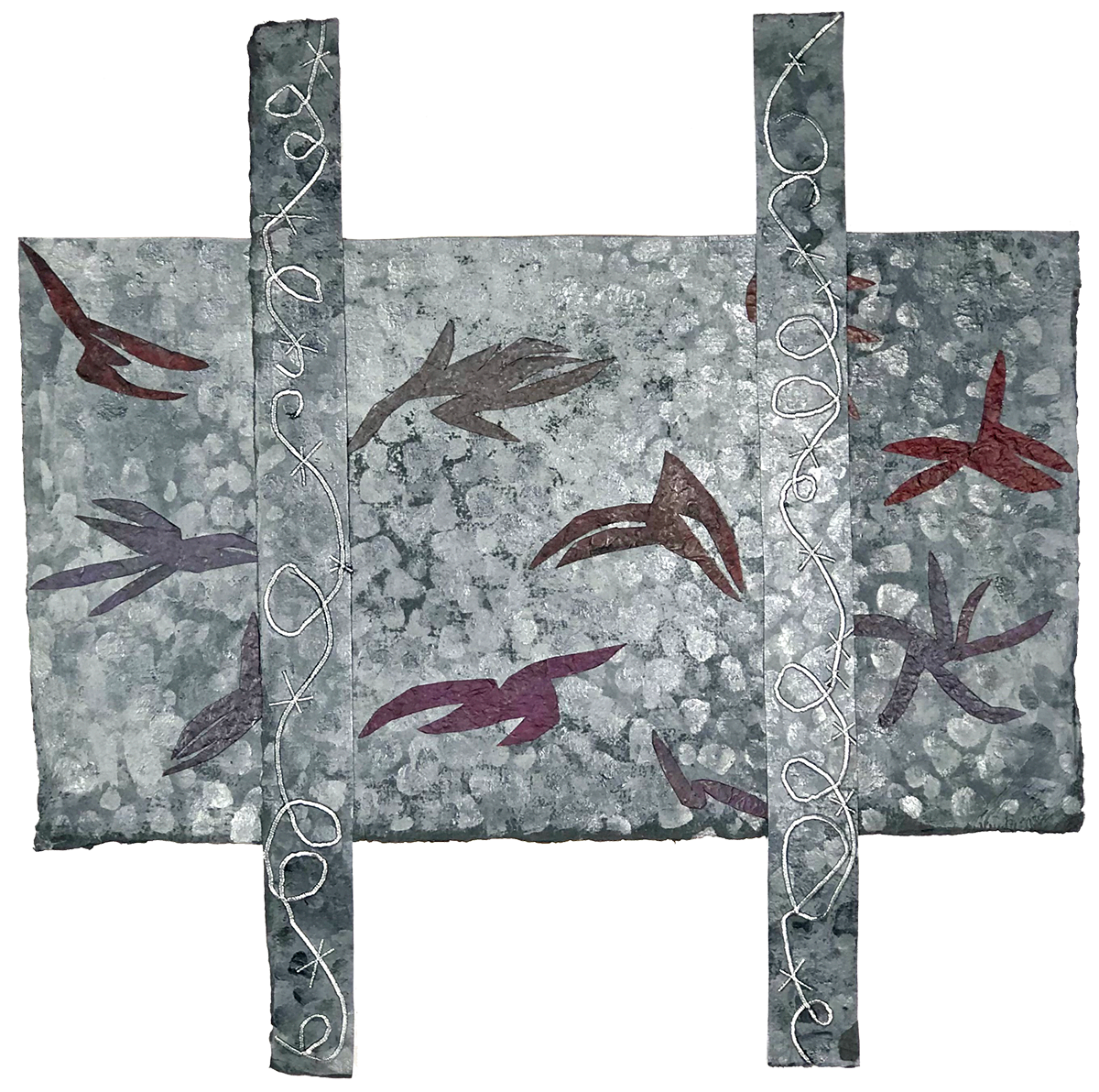-
Beloved
28" x 18" x 15"
Urethane Plaster Paint Thread Fabric 2025
-
Small Talk
31" x 27" x 12"
Fabric Clay Thread 2024
-
The Salon
30" x 30" x 24"
Fabric Thread Paint Ethafoam 2024
-
The Reunion
18" x 16" x 9 1/2"
Clay Fabric Thread Quills 2025
-
Pour
47" x 57" x 8"
Fabric Thread Ceramic 2022
-
Ozymandias
45" x 18" x 2 1/2"
Fabric Paint Thread Ceramic 2022 -
Poor Boy
55" x 11 1/2" x 3"
Ceramic Chiffon Acrylic 2022
-
Fragile
20 1/2" x 21" x 1 1/2"
Clay Fabric 2022
-
Flight
30" x 30"
Paper Paper Thread 2022![]()
-
Rectangle and Ripples
52" x 30" x 7"
Muslin Chiffon Acrylic Thread 2021![]()
-
Outpour
3' 10" x 2' 1" x 2"
Fabric Acrylic Ceramic Thread 2021![]()
-
Edges
54" 38"
Chiffon Acrylic Thread 2021![]()
-
Calving
54" x 34"
Chiffon Acrylic Paint Thread 2020![]()
-
Passage: My Grandmother's Brooch
36" x 22"
Mixed Media Acrylic 2021![]()
-
Passage: My Grandmother's Veil
39" x 19"
Fabrics Thread Acrylic 2021![]()
-
Help Head, Help Heart
42" x 36" x 1 1/2"
Chiffon 2021![]()
-
Sitting Shiva
42" x 26"
Chiffon Canvas Acrylic Thread 2021![]()
-
Silver Stitched and Sewn
22" x 26" x 5"
Fabric Acrylic Thread 2022![]()
-
Partially Hidden
41" x 30"
Muslin Chiffon Wool Acrylic 2020![]()
-
Slitted
38" x 24"
Chiffon Acrylic Paint Thread 2020![]()
-
Vortex
39 1/2" x 29"
Crinoline Acrylic Embroidery Thread 2020![]()
-
Split
46" x 25"
Crinoline Thread Paint 2020![]()
-
Roped
42 1/2" x 22"
Buckram Burlap Embroidery Thread 2020![]()
-
In the Mind's Eye
32" x 31"
Buckram Paint Thread 2023![]()
-
Infinities
42" x 50"
Burlap Paint Thread 2021![]()
-
![]()
Layered
31" x 25"
Buckram Acrylic Paint 2020 -
Patched
33" x 21"
Buckram Acrylic Paint 2020![]()
-
![]()
Garden Party
37" x 22"
Buckram Paint Garden Thread 2020 -
Unravelled
37" x 27"
Crinoline Paint Thread 2020![]()
-
![]()
Woven and Sewn
36 1/2" x 24"
Crinoline Acrylic Embroidery Thread 2020 -
![]()
Stopped
20" x 16"
Acrylic Buckram Embroidery Thread 2020 -
Gray Grid
30" x 18"
Mixed Media 2019![]()
-
Green Grid 2
21 1/2" x 14"
Mixed Media 2019![]()
-
Orange Inset
22" x 14"
Mixed Media 2019![]()
-
Horizontal Threads
25" x 17"
Mixed Media 2019![]()
-
Stitched Up the Middle
23 1/2" x 19"
Mixed Media 2019![]()
-
Red Grid on Blue Ground
23" x 19"
Fabric Paint Thread 2019![]()
-
Two Tabs
25" x 18"
Mixed Media 2020![]()
-
Grid Patch
27" x 27 1/2"
Mixed Media 2019![]()
-
Fractured
48" x 26"
Canvas Acrylic Thread 2020![]()
-
![]()
Back to Back
30" x 44"
Canvas Burlap Acrylic Chalk 2020 -
![]()
Continuum (with Chalk Drawing)
22" x 81"
Canvas Burlap Acrylic Chalk 2018 -
![]()
Continuum (Gray Green Sharp Purple)
42" x 81"
Canvas Acrylic 2017 -
![]()
Continuum (Gray Blue Yellow Rust)
42" x 89"
Canvas Paint 2017 -
![]()
Continuum (Gray Green Blue
with Faint Purple)
42 1/2" x 94 1/2"
Canvas Acrylic 2017 -
![]()
Continuum (Big Bardo)
58 1/2" x 113"
Canvas Burlap Acrylic 2017 -
![]()
Continuum (Gray and Green)
30" x 84"
Canvas Jute Acrylic 2017 -
![]()
Continuum (Brown Blue)
30 1/2" x 73"
Canvas Acrylic 2017
-->
-
![]()
We Are Double Within Ourselves
5'3" x 8'10"
Burlap Paint Canvas 2014 -
![]()
While Here on the Ground
5'1" x 8'7"
Burlap Paint 2014 -
![]()
The Illusion of Certainty
5'1" x 8'10
Burlap Paint 2014
Click Image for Detail










































